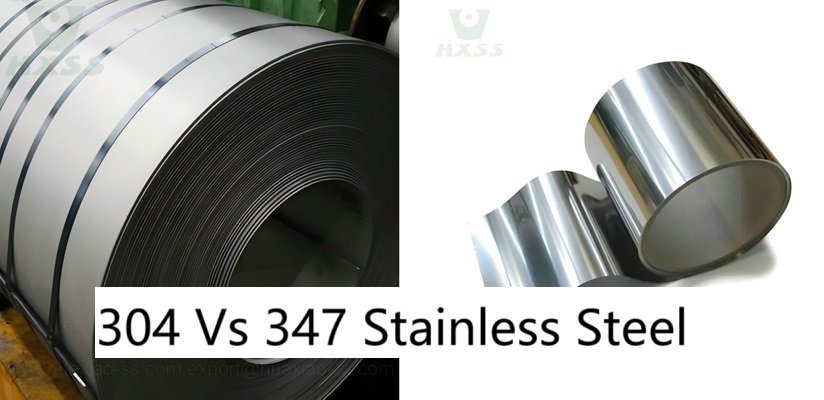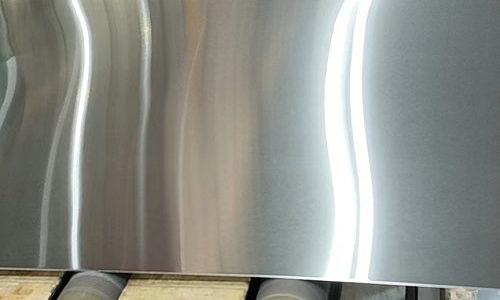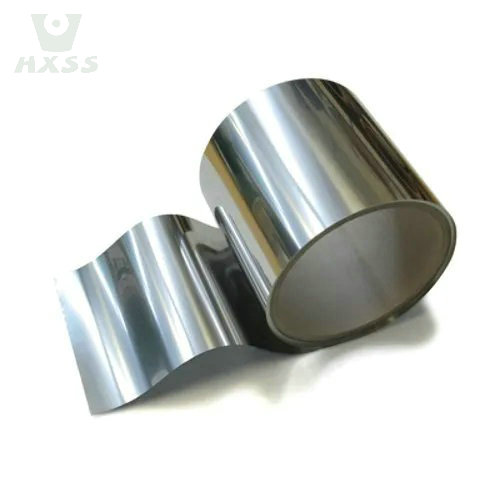In this article, we will focus on two common stainless steel alloys, 304 vs 347 stainless steel. These two alloys are widely used in engineering and manufacturing, but there are important differences, advantages, and disadvantages between them. Understanding these differences is critical to properly selecting materials to meet specific needs.
304 stainless steel, a classic stainless steel alloy, is known for its good corrosion resistance and versatility but may have some limitations in high-temperature and welding applications. In contrast, 347 stainless steel performs better under high temperatures and welding conditions, making it the preferred choice in some specific areas. Let’s take a closer look at both types of stainless steel to help you decide which one is right for your project.

304 Stainless Steel
304 stainless steel is generally considered the standard for austenitic steel and is widely used in many industries. It has excellent corrosion resistance and is relatively easy to form and weld. Its unique composition also allows it to withstand extreme temperatures, both hot and cold, making it ideal for applications with high temperatures or extreme cold. It is also non-magnetic and has excellent mechanical properties, making it an excellent choice for many projects.

347 Stainless Steel
347 stainless steel has many advantages over 304 stainless steel, but its main advantage is its ability to withstand higher temperatures without losing strength or becoming brittle. This makes it an excellent choice for extreme temperature applications, such as turbines or boilers where temperatures may exceed 1000°F (537°C). It has higher corrosion resistance than 304 stainless steel due to its higher chromium, nickel, molybdenum, titanium, and aluminum content. Additionally, 347 stainless steel is non-magnetic and has good ductility (can be easily formed into a variety of shapes).

304 vs 347 Stainless Steel – What’s the Difference
304 vs 347 stainless steel are both stainless steel alloys, but they have some key differences, particularly in their composition and application. Here’s a comparison between 304 and 347 stainless steel:
Composition: 304 vs 347 Stainless Steel
304 Stainless Steel: It is an austenitic stainless steel and contains approximately 18-20% chromium and 8-10.5% nickel. It also has a small amount of manganese and silicon.
347 Stainless Steel: It is also an austenitic stainless steel but contains approximately 17-19% chromium, 9-13% nickel, and about 0.3-0.4% columbium (also known as niobium). The addition of columbium makes 347 stainless steel more stable against carbide precipitation during welding.
Carbide Precipitation Resistance: 304 vs 347 Stainless Steel
304 Stainless Steel: While 304 is corrosion-resistant and widely used in various applications, it is susceptible to sensitization, which can lead to the formation of chromium carbides along grain boundaries when exposed to high temperatures during welding or heat treatment. This can reduce its corrosion resistance in certain environments.
347 Stainless Steel: The addition of columbium in 347 stainless steel makes it more resistant to sensitization and carbide precipitation during welding and high-temperature applications. This makes 347 stainless steel suitable for applications where elevated temperatures are a concern.
High-Temperature Applications: 304 vs 347 Stainless Steel
304 Stainless Steel: It is suitable for a wide range of applications and environments, but it may not perform as well as 347 stainless steel in high-temperature applications due to its sensitivity to carbide precipitation.
347 Stainless Steel: 347 is often chosen for applications where exposure to elevated temperatures, such as in exhaust systems and high-temperature chemical processing equipment, is a concern. Its resistance to sensitization and carbide precipitation at high temperatures makes it a better choice in these situations.
Corrosion Resistance: 304 vs 347 Stainless Steel
Both 304 and 347 stainless steel offer good corrosion resistance in a wide range of environments, including exposure to moisture, acids, and salt.
Cost: 304 vs 347 Stainless Steel
The prices of different types of stainless steel, 304 and 347, depend on a variety of factors, including market demand, production costs, specifications, and suppliers. Generally speaking, 304 stainless steel is usually cheaper than 347 stainless steel because its alloy composition is simpler, and the production cost is relatively low. Here are some factors that may affect the price of these two types of stainless steel:
Alloy composition: 347 stainless steel contains more alloying elements, such as cobalt (or niobium). The higher cost of these elements may make the price of 347 stainless steel slightly higher than that of 304 stainless steel.
Specifications and shapes: Stainless steel materials of different specifications and shapes usually have different prices. For example, the price of stainless steel in shapes such as plates, pipes, bars, etc., may be different.
Market supply and demand: Market factors also have an important impact on stainless steel prices. Supply and demand, price fluctuations in international markets, and geographical location may all affect the price of stainless steel.
Suppliers and regions: Stainless steel prices may vary between suppliers and regions. Some suppliers may offer competitive prices, while others may charge higher prices.
Conclusion
In summary, 304 stainless steel is a versatile and widely used stainless steel alloy with good general corrosion resistance but is sensitive to carbide precipitation at high temperatures. On the other hand, 347 stainless steel is a modified version with improved resistance to carbide precipitation, making it a better choice for high-temperature applications and welding. The choice between the two depends on the specific requirements of your application, especially if it involves exposure to high temperatures or welding processes.
